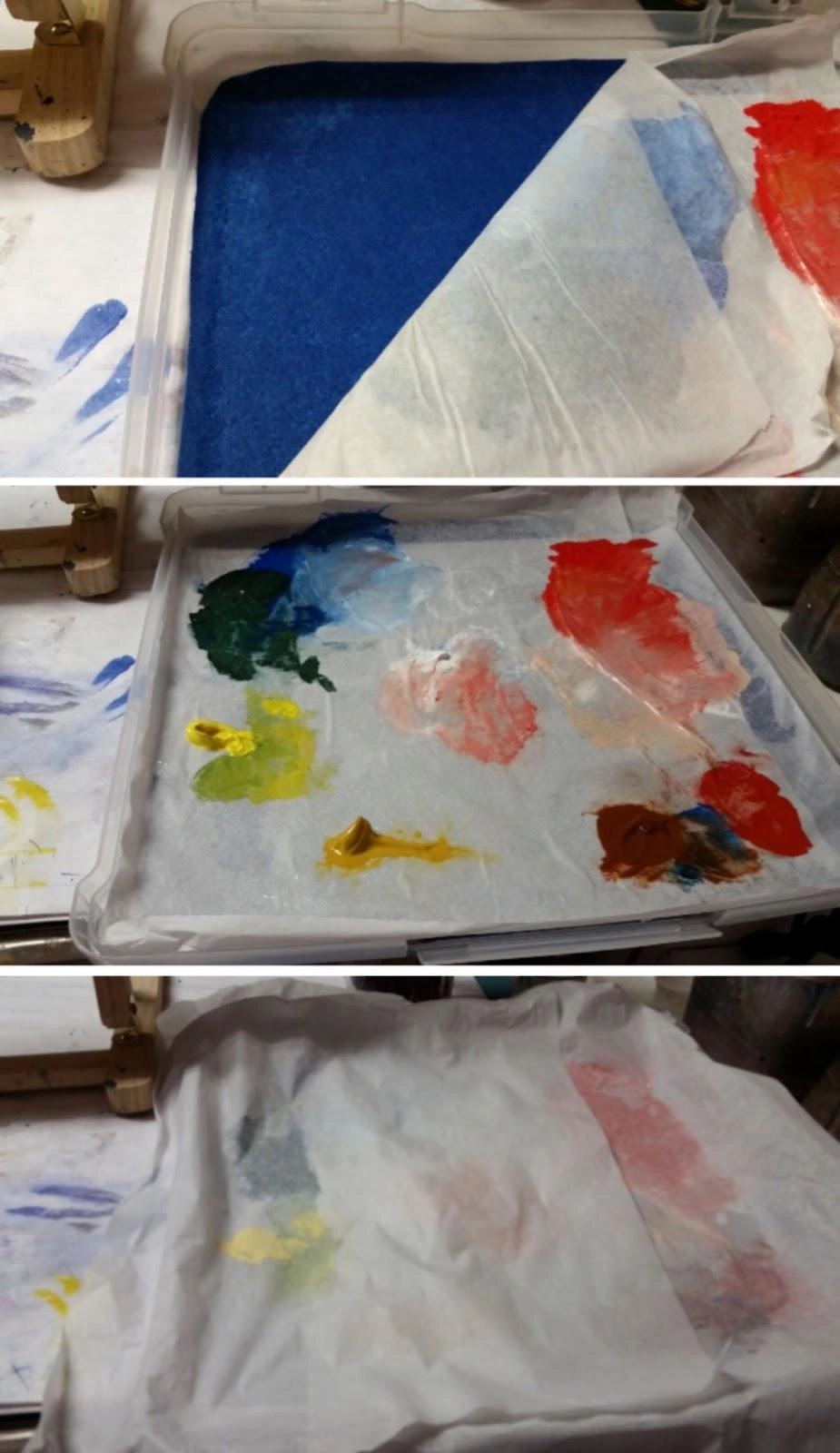I have been painting for 15 years, and in the first 5 years, I have wasted more acrylic paint than I have used. It dries too fast!! Slowly, and meticulously, I have learned How to keep acrylic paint wet.
If you are also there, losing your acrylic paint to weather conditions and whatnot, check out my 6 awesome tips on how to make acrylic paint dry slower.
Why do Acrylic Paints dry Fast?
Acrylic paints
Dry quickly due to their chemical composition and interaction with the environment. Acrylic paints are created by suspending pigment particles in an acrylic polymer emulsion. When exposed to air, the water in the emulsion begins to evaporate.
As the water evaporates, the polymer molecules in the emulsion begin to bind together, resulting in the formation of a solid film. Aside from the chemical composition of the paint, environmental factors such as temperature, humidity, and airflow can all influence the drying time of acrylic paints.
Warmer temperatures and lower humidity accelerate evaporation, causing the paint to dry faster, whereas cooler temperatures and higher humidity slow evaporation, causing the paint to dry more slowly.
6 Tips to Keep Acrylic Paint Wet That Always Work
1. Use a Stay-Wet Palette
One of the most effective ways to keep acrylic paint wet is by using a stay-wet palette.
A stay-wet palette is a type of palette that contains a layer of water-saturated material that helps to keep the paint moist. This method ensures that the paint does not dry out too quickly, allowing the artist to work with the paint for a longer period.

2. Use a Spray Bottle
Another way to keep acrylic paint wet is by using a spray bottle filled with water. Simply spray the surface of the paint with a fine mist of water, being careful not to disturb the paint too much.
This method can be used to keep the paint wet while working, and can also be used to reactivate the paint if it begins to dry out.
3. Cover the Palette When not in use
Cover the palette with a damp paper towel or plastic wrap. This will help to prevent the paint from drying out too quickly, and will also prevent dust and debris from contaminating the paint.
4. Use Slow-Drying
Mediums Adding a slow-drying medium to the paint can help to extend the working time of acrylics. Slow-drying mediums, such as retarders or glazing mediums, can be mixed into the paint to slow down the drying time. This method is particularly useful for artists who work slowly or need more time to blend colors.
5. Work in a Humid Environment
Acrylic paint dries faster in dry environments, so working in a humid environment can help to keep the paint wet for a longer period. Use a humidifier or place a bowl of water near your workspace to increase the humidity.
6. Use a Sealable Container
Another option is to transfer the paint to a sealable container, such as a plastic container with a lid. This will help to keep the paint moist and prevent it from drying out too quickly.

Conclusion
There are several ways to keep acrylic paint wet for longer periods. Using a stay-wet palette, spraying the paint with water, covering the palette, using slow-drying mediums, working in a humid environment, and using a sealable container are all effective methods.
By following these tips, artists can work with acrylics for a longer period and achieve the desired effects in their artwork.
FAQs
1) How do you keep acrylic paint from drying out overnight?
To keep acrylic paint from drying out overnight, seal the paint container tightly. Alternatively, you can cover the palette with plastic wrap to prevent air exposure and keep it in a cool place.
2) How long do acrylics stay wet?
Acrylic paint can stay wet for a few hours to a couple of days when stored in an airtight container.
3) Can you add oil to acrylic paint?
Yes, you can add a small amount of oil such as linseed oil or medium to acrylic paint to modify its texture and properties.
4) How do you make a stay-wet acrylic palette?
To make a stay-wet palette for acrylics, use an airtight container, place a wet sponge or paper towel underneath a palette paper or pad, and seal.
5) How do you make creamy acrylic paint?
To make acrylic paint creamy, mix it with a medium such as gloss or matte medium, or use heavy body paint instead of fluid paint.


Comments